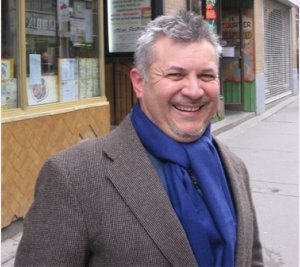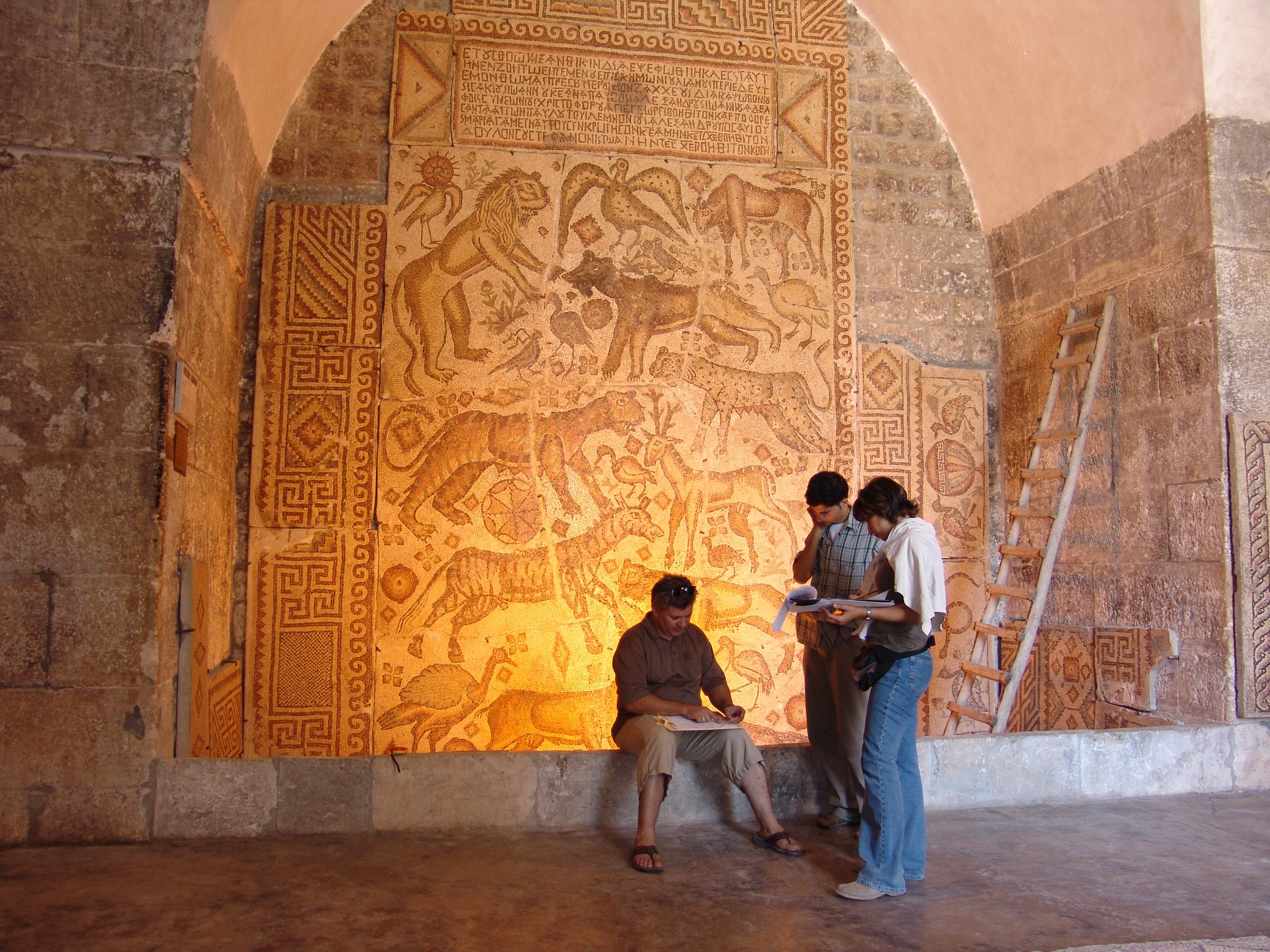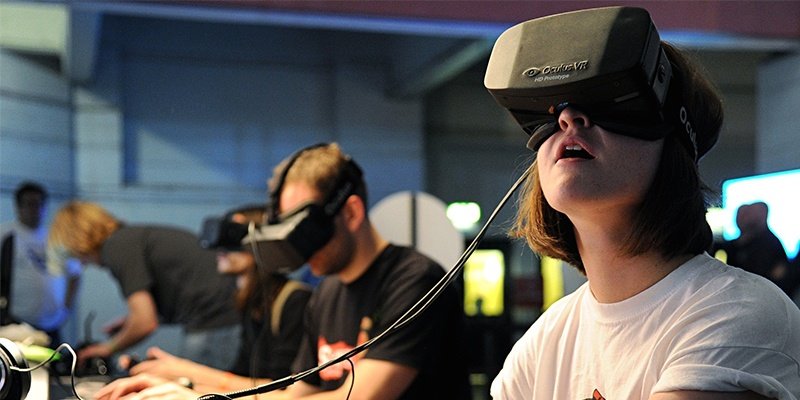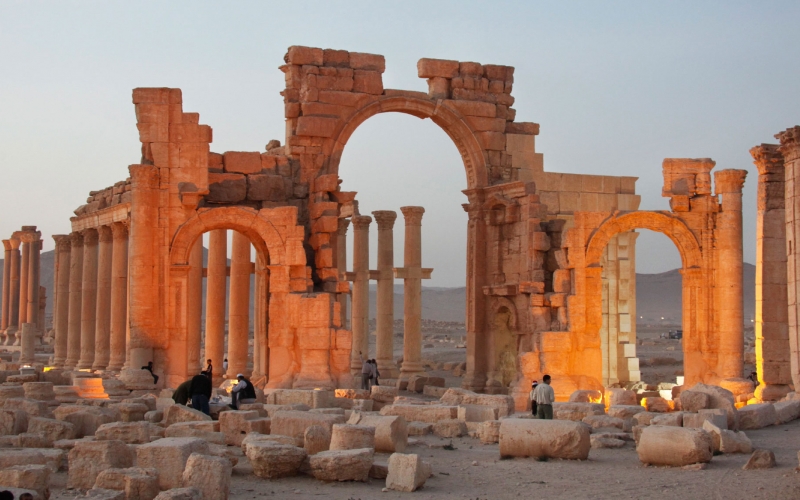Dr. Amr Al-Azm

Dr. Al-Azm
Educated in the UK, Dr. Amr Al-Azm has held multiple archeological positions, teaching positions, and has excavated a number of sites. He was the Founder and Director of Scientific and Conservation Laboratories at the General Department of Antiquities and Museums (1999-2004) and Head of the Centre for Archaeological Research at the University of Damascus (2003-2006). He also taught at the University of Damascus through 2006. Currently, he is a professor of Middle East History and Anthropology at Shawnee State University in Ohio.
While working in Syria, Dr. Al-Azm was a first-hand observer and sometime participant of the reform processes instigated by Bashar Al-Assad thus gaining insights into how they were enacted and why more often than not they failed. Furthermore, he is a keen follower and commentator on current events in Syria and the Middle East in general and has written articles in numerous journals, and major media outlets including guest editorials for the New York Times, Time Magazine and Foreign Policy.

Image: Dr. Al-Azm with students in the Ma’ara Museum, 2005.
He is one of the founders and is a Board Member of The Day After (TDA) a Syrian-led civil society organization working on supporting democratic transition, justice, and sustainable peace in Syria. He was a member of the Executive Committee of The Day After Project and its Economic Restructuring and Social Policy working group. He coordinates the Heritage Protection Initiative (TDA-HPI) for cultural heritage protection at TDA. He also serves as a Co-Director of the The Antiquities Trafficking and Heritage Anthropology Research (ATHAR) Project, an investigative study led by a collection of anthropologists and heritage experts digging into the digital underworld of transnational trafficking, terrorism financing, and organized crime. The ATHAR Project is affiliated with TDA-HPI and is a proud partner of the Alliance to Counter Crime Online.
Community Partner with The Arc/k Project
The Arc/k Project has worked with Dr. Al-Azm to help digitally preserve and protect cultural heritage sites in Syria, exchange training and translation services, and successfully test a methodology for teaching anthropology in group virtual reality with twenty academics and students. Through videoconferencing, Arc/k trained The Day After team in Syria how to use photogrammetry techniques to capture cultural sites, including UNESCO World Heritage Sites Dead Cities and Krak des Chevaliers. Dr. Al-Azm’s experiences in archaeology, research, international relations and education helps Arc/k expand our engagement with the multi-faceted, international efforts and applications for digital heritage preservation.
In September 2020, we interviewed him to learn more about his work and perspectives. In Part 1, we discussed the potential and impact of 3D and Virtual Reality in digital heritage preservation and education. Part 2 focuses on his work with The Day After, Heritage Protection Initiative and the ATHAR Project.
ARC/K: We’d like to talk about your work in 3D, Virtual Reality in education and digital heritage preservation.
AL-AZM: Virtual Reality should never be seen as a replacement for the real thing. I don’t think they should be confused and it’s not a binary. It’s not an either/or — you either have VR or you have the real thing. You need both. And for me, at least, I see the future of cultural heritage preservation and heritage management in many ways, and in other areas too, attached and connected with VR. I think this is the future.
Education in Virtual Reality
I constantly talk about that with my colleagues as well. Just as today, when kids go to college, they have to save up for or invest in a laptop. One day they will have to invest in a VR set too–that will become part of their everyday toolkit.
When you think about COVID-19, and what we’re going through, can you imagine if classes right now were set up in VR form? The teachers and everybody else are teaching, and they are in VR, so you are in a room, in a VR state, and the teacher is standing in front of you and giving you their lesson, and you’re hearing and listening and interacting with the teacher. And the teacher, say, is giving a lesson on a castle. The teacher can take the students straight into the castle. It’s not just a slide on a wall, or an image on the projector screen. They actually can go to the site. For example, at a battle site, I could describe the last battle on the site, show them the various points of attack, show them where people would have stood and their view. There are so many incredible possibilities.
Image: Virtual world technology VR glasses CC0
I think students get a much better experience and more of a chance. Not everybody learns in the same way. So the more ways you can present information to students; the more likely they are to learn. VR is very much the future and it should become standard. I don’t know if we have the technology all there, but I think we do. I’m not an expert on this. I really think this should become a standard kit that every student gets when they go to school or when they go to university. They buy their laptop, tablet, and VR kit. And then they go to their lectures in VR, whether it’s in a classroom, at home, from the library, or wherever it is set up.
We should be able to have multiple entry points into the VR experience, because not all students have high speed internet, or not all students can afford the hardware and software you need to be able to run this. So you give the students the opportunity to use the one in their library, or use the one in the classroom, or use the one in their home, depending on what their abilities are, in terms of having access to this equipment.

Image: Virtual Reality learning
I see it as the future, as to where we should be heading, especially if we’ve learned anything from COVID-19 and the lockdown. Some experts are saying this is going to become a pattern and that we should adapt to this kind of world in the future. This will be a way to help us address some of this issue, and it can really give us a much more interesting and informative way to exchange and pass on information to students. So that’s from the teaching end with VR.
Educational Cultural Perspective
ARC/K: One of the frequent critiques of Cultural Heritage and Virtual Reality is that it can be isolating, and that there is an impermanence to it because it’s a digital format. As your work more in 3D and our collaborations have evolved, are you developing any thoughts about effective VR or digital representation?
AL-AZM: From the educational cultural perspective, the possibilities are infinite. Can you imagine teaching medicine, teaching surgery and you want to demonstrate to students some sort of procedure? Instead of having students standing behind a glass wall or looking down from the gallery and you can’t really see because you’re too far away, or there is a limit of only two or three students in the operating room, now you can have your entire class all there and they’re watching, observing, and very close up in a VR setting, rather than watching a film.

Screenshot of participants in spheres, exploring Palmyra in the social VR ‘Portals to the Past’, The Arc/k Project, University of Oklahoma and Oklahoma Virtual Academic Laboratory project.
ARC/K : So that sense of isolation can actually be the opposite in VR sometimes, at least in group VR. With our work together with the University of Oklahoma on our social VR session, ‘Portals to the Past’, could you tell us what it was like — teaching Palmyra in VR?
AL-AZM: It was natural for me once I got used to the motion sickness, which, like anything else, you just need to get some practice. To me, VR is the future. I don’t know why we are not doing it. COVID-19 should be the key. It would be better if they were in the classroom in the VR setting as opposed to in their bedrooms on a screen.
Cultural Heritage Emergency Assessment in VR
But then there is the other practical application with VR. You have experts who need to go look at a problem or give expert advice in some type of intervention. Here we’re thinking of cultural heritage monuments under threat because of a conflict situation, or simply because the experts are 3000 miles away and it’s not very practical for them to get on a plane and go to that location. Again, COVID-19 is a good example of why we are not travelling. It’s a conflict. For example, you’re in Italy, and there is a war zone, and you don’t want to send your UNESCO expert to a building that is about to collapse or destabilize due to some natural or manmade problem. Or if it were the Ma’ara museum, it would be the airstrikes on the building that destabilized it. If an expert were able to put on VR, and then the local person there could give them a tour of the building, show them the damage, then they could see the issue for themselves.
So you would have the local guides get all the metadata, the images, so that you could set up the room or image of the damaged part of the building. Then the local individuals, those who are involved with the intervention implementation, the stabilization strategy, and the UNESCO expert would also all be there. In this case, they could take direct measurements using tools, and then they would go back and make a report or make immediate suggestions. Then, they could say, hey you need to reinforce A, and you would point at point A, and then reinforce point B, and C, and D, and this way the structure won’t collapse.

Image: Photogrammetric model of House – Shensherah, Dead Cities, Syria, TDA-HPI. Arc/k Project trained The Day After team on the ground how to capture local Syrian heritage sites using the technique of photogrammetry.
ARC/K: The possibilities really open up.
AL-AZM: That’s the kind of future I see. Experts can have meetings in Virtual Reality where you can provide support, expertise, information, and educational support for people on the ground in areas where, for some reason or another, you can’t get to yourself, but you have people on the ground working and connected.
ARC/K: When reflecting on your work with The Day After, what is your ultimate goal?
AL-AZM: Syrians have suffered from the most traumatic experiences from this conflict. When you look at the scale of the humanitarian catastrophe, literally 50% of the population has been displaced. Syrians are going to have to talk to each other again, and what are they going to talk to each other about? That’s why we focus on heritage. What’s my Syrian identity? Not my tribe or sect. What aspect of my Syrian identity do I share with other Syrians? Other than our food and culture, every Syrian knows certain histories, and shares components. Every Syrian knows who Queen Zenobia is; every Syrian knows the first alphabet was discovered in Ugarit, Syria; every Syrian knows about Palmyra. These shared histories are a point of pride for everyone. They cut across class and background. Cultural heritage can and should be an important asset for post-conflict stabilization and reconciliation.

Image: Roman Theatre at Palmyra: Interior, Perpetuity Palmyra, The Arc/k Project. Screenshot from the social VR ‘Portals to the Past’, The Arc/k Project, University of Oklahoma and Oklahoma Virtual Academic Laboratory project.
Amphitheaters like Palmyra have been misused for decades, even by the regime to host festivals to execute those they didn’t like. These amphitheaters can be repurposed. They can become safe spaces where every Syrian can go and share and talk about maybe their painful experiences in the war, because it doesn’t matter -it’s a neutral space. You’re not in my territory, I’m not in your territory; I’m not on your turf; you’re not on my turf. Or in a museum, where everyone standing in the museum feels some sort of affinity for the object in the museum. So with that in mind, the ultimate goal is preserving cultural heritage whether in the physical sense by doing what you can to protect the site and the monuments from further damage, or by documenting it through images, and recording those sites for posterity.
So for example, The Temple of Bel. The Temple of Bel is gone. My children will never see The Temple of Bel the way I saw it. But if we recreate the Temple of Bel as a model, hopefully not something too garish, through a 3D VR experience, then maybe they will experience it that way. It’s better than nothing. They will still connect to that place. Other than that, how will they experience it, as a picture in a book? They won’t feel the heat of the sun on their face, at sunrise at the Temple of Bel, but they might be able to come close to that. So the next best thing I think is VR. You simulate the rise of the sun as it hits the window of the structure, and it’s going to be a much more realistic experience than just watching a film.

Image: Image from 3D model of Temple of Bel, Perpetuity Palmyra, The Arc/k Project
ARC/K: Right, the more you can trick the senses into thinking you’re there, the better. Like you said, it will never be the same as the physical, but it can be something better than nothing.
AL-AZM: So we preserve what we can physically and document and ensure that we have a detailed record for what isn’t. And if you decide to reconstruct from an accurate model, for whatever reason, then you are going to want that detailed record.
ARC/K: Anything else you would like to add or talk about?
AL-AZM: One of the things is to not let the experiences of conflicts like that become forgotten. One of the problems is that conflicts are horrible things. People like to forget them, not relive them. When we relive them, we call them nightmares, flashbacks. But in those flashbacks and nightmares, there are important lessons. Maybe we should be able to somehow learn from them and apply them to our lives and future, without having to have the painful experience of flashbacks as well.
One of the lessons we have yet to learn that is very important is the role of non-state actors in this work. Many major organizations– UNESCO, ICOMOS, ICCROM–are only geared or only know how to function with other major organizations, state institutions, and state structures. For example, UNESCO knows how to work with the Department of Antiquities in Egypt or in Cairo or in Syria or Damascus or Timbuktu. But you bring a non-state actor and they have no real mechanisms in place. However, the non-state actors are on the frontlines. In the 21st century and 21st century conflicts, they are the guys on the frontlines.
In Syria, the guys that bore the brunt of the duty to protect and document cultural heritage were non-state actors in the area. Remember, in 2015, the Syrian regime controlled less than 30% of the country, so 70% of Syria was out of their control. Five out of the six UNESCO designated world heritage sites were outside the control of the regime. So in that time, the only people who were documenting were not in Damascus. Yet they got no attention, no support, no backup. And the regime itself is under sanctions. So you have a regime that’s under sanctions, a regime that’s basically openly illegitimate. How are you going to work with them? You have to find another way, you have to work with local non-state actors. We need to give them the means, as our duty to protect and document cultural heritage.
The international community has yet to develop really effective, properly functioning mechanisms to work with non-state actors. That’s a missed opportunity in my opinion. I think we should really learn from that. For example, if you think of Mali and after the ISIS takeover. It wasn’t the state that protected those libraries. It was local curators, local people who took the stuff and hid it from ISIS so that it wouldn’t be destroyed. It wasn’t the Ministry of Culture stepping in and removing that stuff. It was local. Even in the case in Syria, where you have functioning mechanisms. Even then, the state had no time or resources to invest in that institution. So if it weren’t for their will and dedication, irrespective of whether they work for the government or state, whether they were in opposition or regime-controlled areas, those guys are our colleagues. They were doing what they could. They didn’t get enough support either.
ARC/K: I remember when we were potentially thinking about going to Busra to document the Roman Theater there, and you said yes, I have a guy that can get us generators. Maybe they’re a little shaky on certain things, but there are people that have connections.
AL-AZM: But with official entities, it’s really hard. If you’re getting federal funding, it’s a tough call. I think we need to learn from these lessons and we need to learn from the importance of accruing and working with non-state actors and supporting them. More often than not, it’s the locals who are the driving force or factor. The decision to protect the Museum of Ma’ara was not from the international community. It was not me sitting at my office in Ohio. No. It was the locals who decided they wanted to protect it and then reached out to someone like me and said ‘help us do this’. It’s very much ground up and I think we need to understand and appreciate it.
The real heroes of our story are the people who go out, under the risk of an air strike, to get those photographs for us of a damaged building. Or the person who bravely went out and documented all of this stuff, when he could have gotten shot at by terrorists at the Turkish border. They are the real heroes of the story. I might be able to tell a nice story but I am not the hero of the story.
ARC/K: Thank you for this wonderful interview, Amr. We are grateful to continue working together towards solutions and to further developing our research of 3D and VR applications in heritage preservation and protection. By empowering cultures in crisis to protect their own identity against illicit trafficking, digital poaching, vandalism, and ideological/religious warfare, we hope to put digital tools in the hands of those that can make a real difference.

Palmyra’s Arch of Triumph, The Day After
